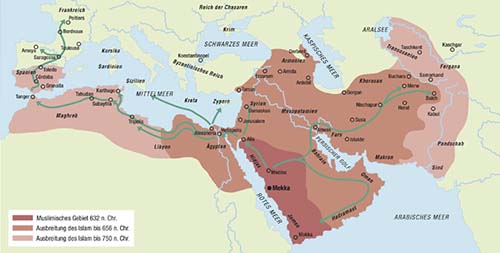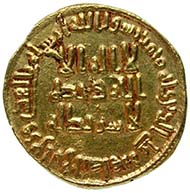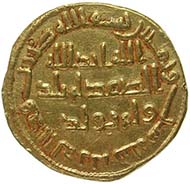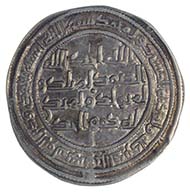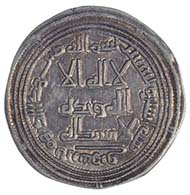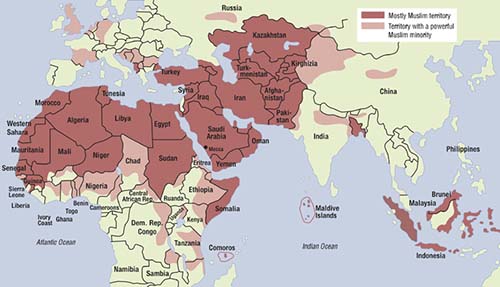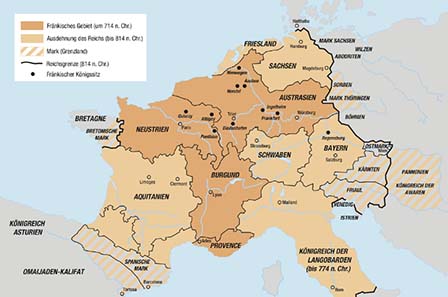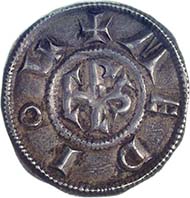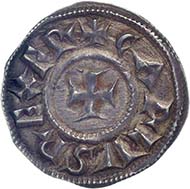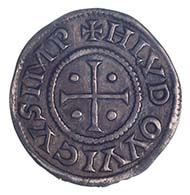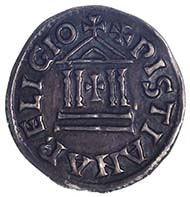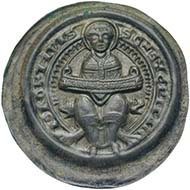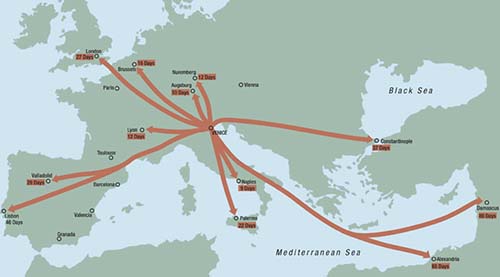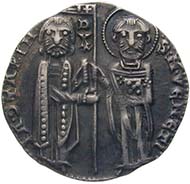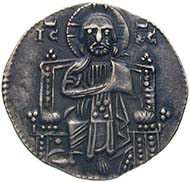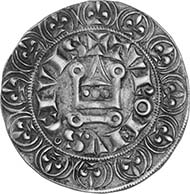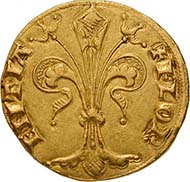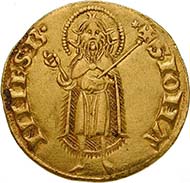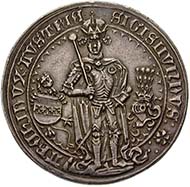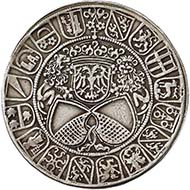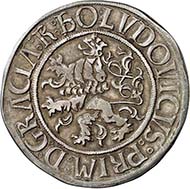by courtesy of Jürg Conzett, MoneyMuseum
Money and Currencies in history
Part II: The Middle Ages
Numismatics is down to specialists only! Most scholars, most coin collectors adore their tiny little subject and do not know anything about neighboring fields. But sometimes you want to have an outline of all the most important currencies that have been used. The Zurich MoneyMuseum has issued a popular booklet on this theme a few years ago. In the meantime the revised edition is ready to be published. We will present its text in CoinsWeekly by courtesy of Dr. Jürg Conzett.
Dinar and Dirham
Islam Conquers the Orient
In the early 7th century, the prophet Mohammed experienced his revelation in Mecca, a very important commercial centre of Arabia at the time. The Islamic era starts with his emigration from Mecca to Medina. This date is still used as a referential point for the designation of date on modern Islamic coins.
In Medina, Mohammed founded the first Islamic community, which controlled the religious life of its members as well as their secular behavior. It was this religious unity that enabled the Muslim to disseminate their religion and to extend their power to the entire Southern and Eastern part of the Mediterranean See. Within a very short period of time, the Islam controlled the former realm of the Sassanian Dynasty and a great part of the Byzantine provinces.
Abd al-Malik, caliph and ruler of the Umayyad caliphate 685-705, dinar, gold (4.23 g), 83 AH (= 702), Damascus
In 696, i.e. 77 after the Hijra, Mohammed’s emigration from Mecca, Abd al-Malik conducted a monetary reform. Until then, the Umayyads had imitated the Sassanian silver and the Byzantine gold coins, but especially the pictures of these coins seemed no longer appropriate to a Muslim empire. The authorities, which had handled aniconism casually in the beginning, took more and more notice of it. Therefore, Abd al-Malik created a new gold currency, the dinar, which had a weight of 20 Arabic carats or 4.25 g. Its subject summarized the essentials of the Islamic confession. The inscription on the obverse reads, “There is no God besides Allah; there is none next to him.” The reverse sais, “God is unequalled, God is eternal, he doesn’t create and he wasn’t created.”
Al-Walid, caliph and ruler of the Umayyad caliphate 705-715, dirham, silver (2.77 g), 92 AH (= 711), Abarshahr
The silver dirham was introduced at the same time as the golden dinar. Its weight depended on local habits.
Today dirhams are not only found on the Arabic Peninsular. Numerous pieces were brought to and buried in Scandinavia. This is due to the fact that since the 9th century, the Vikings from the North had traveled via the rivers of Russia to the Near East in order to carry on trade. They brought slaves, furs, honey, and wax with them and traded them for silver. The Vikings are said to have exported silver to such a degree that the mines under Islamic control did not supply enough silver to cover the want for silver dirhams. Gold became the preferred material for coins.
Abdülhamid II, sultan of the Ottoman Empire 1876-1909. 100 piastre, gold, 1896
In 1844, the Ottoman Empire modernized its coinage. Under the influence of the West, the Turks did not only introduce paper money but also mechanical coin production. The appearance of the coins was secularized; the inscriptions did not communicate religious messages any more, but merely the sultan’s name as well as place and year of striking. At the time of the introduction of the piastre, 100 golden piastres were planned to be made of one pound of gold. This pound of gold was valued at 2.000 silver medshidije. But starting 1873 at the latest, the silver price fell compared to the gold price, so that gold coins could only be acquired with a 5 % addition. Anyone who wanted to recover an amount invoiced correctly had to make a distinction between a gold piastre, a silver piastre or even a governmental piastre. It was not before the Young Turk’s coming into power that the new Turkish government founded a national bank, which succeeded in getting the monetary system under control, but not inflation.
Today’s Islamic World
Today 1.4 billions of individuals, which are about 28 % of the world’s population, profess to Islam. The Islamic religion is mainly spread over desert areas extending from the Sahara over the Near East and the Caucasus Mountains to Central Asia. But in many other states, Islam is predominant, too. Indonesia, for example, is the state with the largest number of Muslims world-wide.
The Islamic countries are inter-governmentally organized in the Organization of the Islamic Conference, the OIC; some countries with a substantial Muslim minority belong to the OIC as well.
The controversial issue whether or not a secular Muslim state is possible became an essential question for all states inhabited by Muslims. Since the declaration of Cairo, fundamentalist politicians have pressed for the Shariah to be made the basis of legislation in all Muslim states.
The different systems of values – of the states ruled by Islamic fundamentalists and of the Western democrazies, influenced by Christianity and capitalism – resulted and still result in a series of attacks by extremists from both sides.
Penny
The Carolingian Empire
When Pope Leo III crowned Charlemagne emperor in Rome on December 25, 800 AD, a new Western European empire was founded.
Then Charlemagne possessed more power than any other medieval ruler had had before. He controlled an enormous realm, from the Pyrenees to Saxony, from Frisia to Carinthia, from Northern Italy to Bavaria and Alamannia, to Burgundy and Aquitaine. Imitating the Roman Empire, Charlemagne tried to enforce a uniform organization of his countries. A standardized monetary system was part of that, just as the missus dominicus (lat. for the envoy of the Lord) who controlled the nobility and the clergy, reigning over their fief. Both the French and the Germans are proud of “their” Emperor “Charlemagne” or “Karl der Große”, who has been reckoned among the Saints of the Catholic Church since 1165.
Charlemagne, ruler of the Carolingian Empire 768-814, penny, silver (1.72 g), Milan, after 793/4
In 755, Charles’ father Pippin (king 751–768) reserved the privilege to strike coins to himself as one of his regalia. Towards 781, Charlemagne created a new standardized monetary system, which lasted in some regions until the 20th century: The pound (lat. librum) was divided into 20 shillings (lat. solidi) or 240 pennies (lat. denarii) resp. Until the 13th century, only the penny actually existed as real coin. Shilling and pound were only used in calculations, invoices and bookkeeping.
Our coin shows a monogram in the middle, which combines the letters CROLS for Carolus; beneath, the name of the mint can be found: MEDIOL for Mediolanum, i.e. Milan. The reverse presents a cross with the inscription CAR(o)LVS REX FR(ancorum), meaning Charles, king of the Franks.
Trade in the Early Middle Ages
We should not overestimate the importance of the pennies for the Carolingian trade. Besides the buying and selling on a monetary basis, there were a lot of other possibilities for luxuries and everyday goods to change hands. Luxury goods in particular were spread as diplomatic presents at the highest level, such as the famous white elephant that Harun ar-Rashid presented to Charlemagne together with precious textiles. In return, Charlemagne bestowed the Arabic envoys with Carolingian swords, which were especially popular then.
Since late Antiquity, however, the greater part of every day’s economy had been based on self-sufficient farm complexes where nearly everything essential for living was produced. What couldn’t be manufactured was acquired by barter, by trading surplus goods for other people’s products.
Louis the Pious, ruler of the Carolingian Empire 814-840, penny, silver (1.66 g), Italy(?), after 814
This denarius shows the name of Louis with the imperial title on the obverse. On the reverse, a Christian church in ancient style is presented, the inscription runs XRISTIANA RELIGIO (lat. for Christian piety, the Greek X stands for Ch).
Louis the Pious does not bear his name erroneously. He took care of a reform of the church law. His partiality for the church was pernicious to the standardized coin system: In 833 the king conferred for the first time the privilege to strike coins. He gave it to the monastery of Corvey, presumably in order to contribute to the construction costs of the new church. For the right of coinage was connected with high revenues: The owner of this privilege received the difference between face value and production costs.
Halberstadt, penny, silver (0.89 g), ca. 1200
In the course of the High Middle Ages, the German emperor lost influence, whereas the cities won power – also concerning the right of coinage. Numerous trading centers occupied this privilege and struck pennies for their own markets. In order to enlarge the mint authorities’ profit, these pennies became worse and worse. They lost weight and purity. This development climaxed in the so-called bracteates, a modern term coming from bractea (lat. for thin piece of metal), which stands for a very thin, single-sided penny.
Bracteates are not just money; most of them are important works of Romanic art. Our coin, which was struck on the orders of Bishop Gero von Schermke for his diocese, features an extremely elaborate depiction of St. Stephen enthroned, the patron-saint of Halberstadt. Vielleicht wäre es besser zu reduzieren: features an extremely elaborate depiction of St. Stephen the patron saint of Halberstadt.
Groschen, Guilder, Thaler
The Waning of the Middle Ages
Towards the year 1000, Europe had made it – The Christian army had driven back the foreign enemies behind the borders. The Arabs had withdrawn to the South of Spain, the Normans were integrated into the European feudal system, and the church had brought the Slavic pagan tribes under its sway by Christianization. This brought the leisure to Europe to concentrate on itself. The centuries after the turn of the millennium did not only produce political innovations, but also a wealth of economical changes. Strong monasteries like the Cistercians cultivated the land and introduced new agricultural methods. Cities set up as centers of trade and industry. The roads became safer. The Crusades brought a close connection to the East. Soon many active and courageous merchants traveled through Europe, Africa and Asia.
In the market places, the range of products multiplied. Merchants traded luxuries and victuals over farther distances. Due to the accelerated turnover of goods, the demand for coins with a higher value grew. Economically active cities started to redesign their money. Italy took the lead, on the one hand because it connected the East and the West, on the other hand because there was no effective central authority and the merchants were able to take the initiative.
Venice, Jacopo Contarini, Doge 1275-1280, matapan, silver (2.18 g), undated
In the reign of doge Enrico Dandolo (1192–1205), the first Venetian grosso was struck. The “matapan” as it was called was worth 24 pennies and continued to be produced until the middle of the 14th century.
The idea to strike a “grosso” (it. for fat), i.e. a heavier silver coin, was not new. In 1172 Genoa already had made grossi, other cities followed. The success of the Venetian matapan was connected with the city’s increase in power. As a matter of fact, the first matapans were issued in order to pay for the construction of the ships the crusaders had ordered for their passage to the Holy Land. The knights had to declare themselves insolvent, so that the Venetians were able to abuse the army for their own purposes: The forth crusade ended with the conquest of Constantinople in 1204. This was the beginning of the Venetian trading empire.
Louis IX, king of France, 1226-1270.Gros tournois, silver (4.22 g)
The concept to strike heavier silver coins spread from Italy to the North. In 1266, the French king Louis IX, better known as Saint Louis, created a new silver coin valued at 12 pennies. This coin was called gros tournois, after the Italian grossi. It showed the emblem of Tour on the obverse. The two circles connected by a line were interpreted as the manacles of Saint Louis, who was taken prisoner during the sixth crusade. After having paid an enormous ransom, he was allowed to return to France. His coat of arms, a wreath of lilies, is depicted on the obverse as well. The reverse presents a cross in the middle and the inscription, “Praise the name of our Lord Jesus Christ”.
The French merchants had been eager for a coin like this. Within only a few years, the gros tournois circulated at every important fair and trading center in France. It was so popular that it was imitated immediately. The Netherlands as well as the economically active Rhineland, for instance, both struck “Turnosen”.
Florence, fiorino d’oro, gold (3.5 g), 1252-1307
Around 1252, half a century after the heavier silver coins had come into use in Italy, the important trading cities Florence and Genoa started to strike gold coins nearly at the same time. These compensated for the cessation of the Byzantine solidi, which had been used to settle large amounts so far. But not only European cash developed. In the bankers’ city of Genoa, the essentials of cashless money transfer such as account, remittance and bill of exchange were invented in the same century.
The gold coins of Florence were the expression of the merchants’ grown ego. In 1250, they had won participation in the city’s government. The new government placed the lily, the city’s coat of arms, on the fiorino d’oro, which was also called florin or guilder (derived from golden) in foreign countries. This coin was to form European currencies during the coming centuries.
Venice, Pietro Gradenigo, Doge 1289-1311, ducato in oro, gold (3.5 g)
On October 31, 1284, the council of 40 approved the doge’s motion to strike a new gold coin, equaling the Florentine fiorino d’oro with regard to value, as the resolution emphasized.
The Venetian gold coins were designed in imitation of the matapans, with John the Evangelist placing a standard, close to which the term DVX (lat. for duke) is written, into the hands of the kneeling doge as a sign of rule over the duchy of Venice. This picture remained unchanged until Venice lost its independency and its coin privilege to Austria in 1797.
This coin is known under the name “ducat”, which derives from ducatus (lat. for duchy), or “sequin”, from zecca (it. for mint).
Austria, Sigismund “rich in coin”, archduke 1477-1490, guldengroschen, silver (31.6 g), Hall, 1486
While there was enough silver in Europe, gold was lacking and had to be imported from the Islamic East at a high price. Therefore, the idea of having a heavy silver coin which could replace the gold coins at least to some extend seemed to suggest itself. But the production of a silver coin with the value of a gold coin involved huge technical problems: Such a silver coin was bound to be much bigger and heavier than a gold coin.
In 1486, the mint of Hall in Tyrol succeeded in striking the guldengroschen, a silver coin which equaled the guilder concerning its value. At that time, Hall was one of the most important mints in Europe. The many tons of silver that came from the rich deposits at Schwaz and were transferred into coins in Hall made the archduke of Tyrol go down in history as Sigismund “rich in coin”.
Zurich, guldiner, silver (29.6 g), 1512
The first guldengroschen from Hall was rather made to represent and impress than to serve the trade. But the idea of a heavy silver coin spread over the whole of Europe. Already before 1500, the new coin was struck on a regular basis in the territories of Tyrol, Lorraine, Hesse, Saxony, Sitten, Bern, Savoy, Hungary, Spain and Bohemia.
Our example originates from Zurich and was struck in 1512. It is a representative coin, showing objects of pride of Zurich citizens before Reformation: On the obverse, two lions present two shields featuring the coat-of-arms of Zurich. Above, a shield with the imperial double-headed eagle calls attention to the fact that Zurich possessed the imperial immediacy. 16 coats-of-arms surround this picture. They belong to various regions where the city of Zurich provided the vogt.
The reverse depicts the three patron saints of Zurich, Felix, Regula and Exuperantius, holding their heads in their hands. They are said to have been beheaded on the very spot where today the “Wasserkirche” is located, during Diocletian’s persecution of Christians.
Schlick County, Stefan and his brothers, Lords of Joachimsthal 1510-1528, thaler, silver (28.8 g.), undated (after 1520), Joachimsthal
Not only the archduke of Tyrol disposed of important silver deposits. The counts of Schlick had been given the privilege by the Bohemian king to exploit the mines of the valley of Konradsreuth, where large quantities of silver had been found. With the permission of the Bohemian council, a mint was established at the newly founded city of Joachimsthal in 1520. (Joachims-)Thalers, featuring the picture of Saint Joachim on the obverse and the Bohemian lion on the reverse, were struck there in vast numbers and soon became the paragon of a heavy silver coin. Their name replaced the term “guldengroschen” and still survives in “dollar”.
Continue your read with Part III.
If you missed part I you can find the article in our archive.




